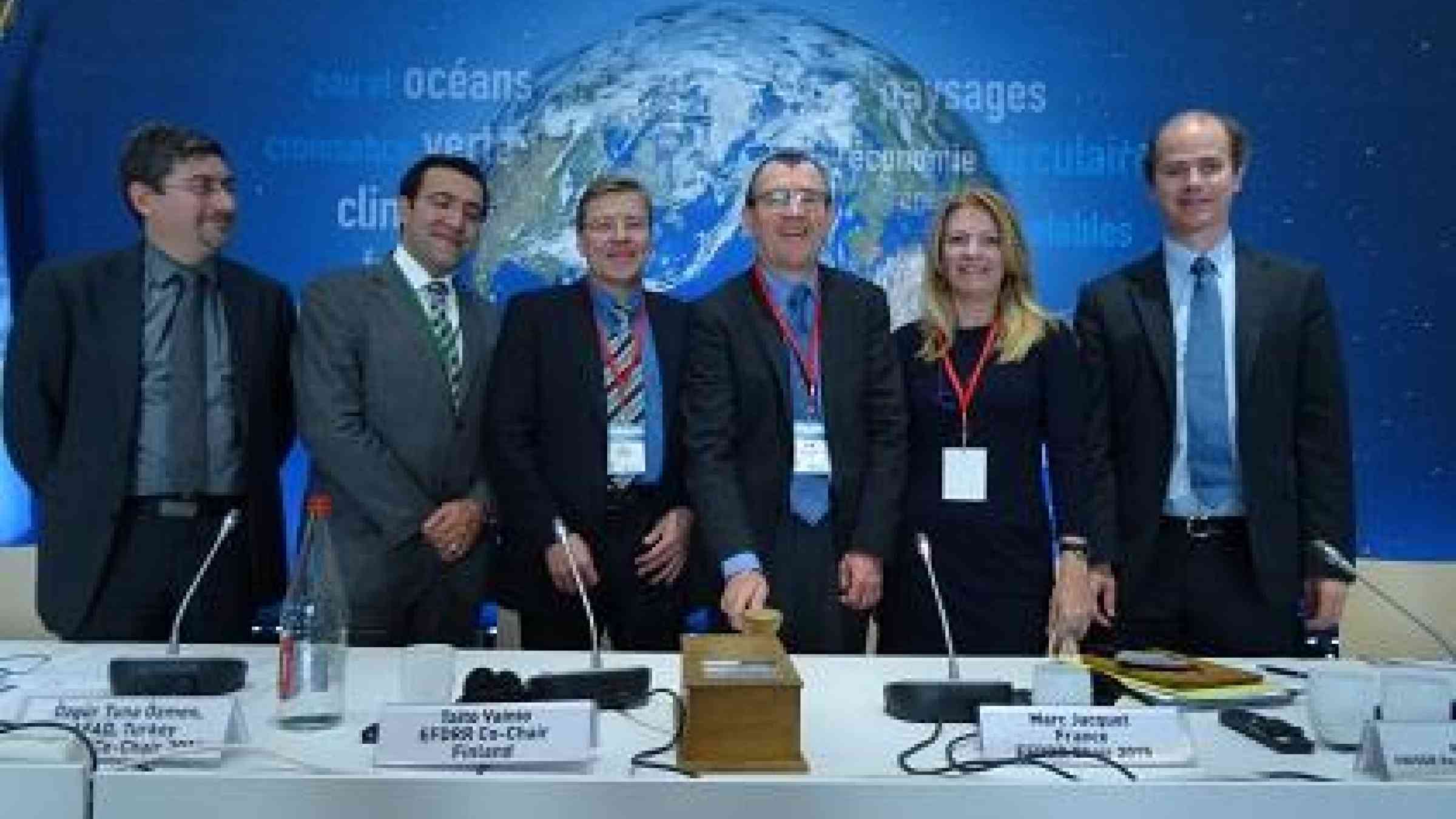Europe adopts Sendai roadmap

PARIS, 9 October 2015 – European countries on Friday issued a broad-ranging plan to energize their implementation of the Sendai Framework for Disaster Risk Reduction, an international agreement that aims by 2030 to reduce substantially the number of deaths and economic damage caused by natural and man-made hazards.
After three days of talks, the 6th Annual Meeting of the European Forum for Disaster Risk Reduction adopted a five-year roadmap setting out priorities to help achieve the Sendai Framework’s goals over the coming decade and a half. It is set to receive political endorsement at a ministerial meeting in Finland next year.
“Our continent has to face up to a twin challenge, continuing to develop in a sustainable fashion while also tackling climate change,” said session chair Mr. Marc Jacquet, of France’s Ministry of Ecology, Sustainable Development and Energy.
Currently at the helm of the European Forum – Finland takes up the role in 2016 -- France is all too aware of disaster risk after flash floods caused by record rain in the country’s southeast last weekend claimed almost two dozen lives. Many of the dead were people in an underground carpark who tried to save their cars from the flood surge, providing a tragic case study of how not to act when confronted by a natural hazard.
In addition, Paris is preparing to host the COP21 UN climate summit in December.
“Climate change, combined with the way our territories are developed, is increasing disaster risk. We face more frequent and intense extreme weather, and what could be a one-metre rise in sea levels by 2100, along with an increase in the amount of land hit by drought and in danger of wildfire,” said Mr. Jacquet.
“Disaster risk reduction is an important lever for concrete contributions to the action agenda that will accompany the COP21 agreement,” he added.
Globally, disaster losses have increased to US$250-300 billion a year, with over 80% of them caused by weather-related hazards.
In 2014 alone, the number of hydrological disasters – floods and storms, for example – what 45% higher than the decennial average. Disaster damage in Europe last year amounted to US$7.8 billion. Nine floods in Europe last year cost US$100 billion each.
The 15-year Sendai Framework was adopted in March by the 3rd UN World Conference on Disaster Risk Reduction, hosted by Japan, and endorsed by the UN General Assembly in June. It is the successor to the 2005 Hyogo Framework for Action, and shifts the emphasis even further to curbing risk in the first place rather than management of the impact of hazards.
“The Sendai Framework will require a stronger and wider approach to disaster risk reduction. The endorsed roadmap sets the focus for concrete European action,” said Ms. Paola Albrito, head of UNISDR’s Regional Office for Europe.
The clock is ticking on an initial Sendai Framework target: to substantially increase the number of countries with national and local disaster risk reduction strategies by 2020.
Given that that is a key to the Sendai Framework’s success by 2030, and that solid information is the bedrock of effective strategy, the European Forum’s roadmap identifies risk assessments and disaster loss databases as essential building blocks.
In addition, it highlights the need to integrate disaster risk reduction in different sectors of a country’s administration, society and economy, to make sure that policies are people-centred, and that the public is risk-aware and able to act on risk knowledge.
After reviewing gaps in implementation of the Hyogo Framework, the European Forum said that focus areas for its work in the Sendai Framework era would be climate change, environment, the private sector, health, and persons with disabilities, all at national and local levels.
“What’s very important is to bring all policies together under a risk-informed approach,” said Mr. Thomas de Lannoy, of the European Commission's Humanitarian Aid and Civil Protection department.
“There’s really a lot to learn from the new Sendai Framework,” he said.
The Sendai Framework and the COP21 process are part of a four-track global effort to make development more sustainable.
Last month, world leaders at the United Nations in New York adopted “Transforming our World: The 2030 Agenda for Sustainable Development”, a package of 17 interlinked goals that aim, by 2030, to eradicate extreme poverty, promote prosperity and people's well-being, while protecting the environment. In July, they backed the Addis Ababa Action Agenda on financing for development.